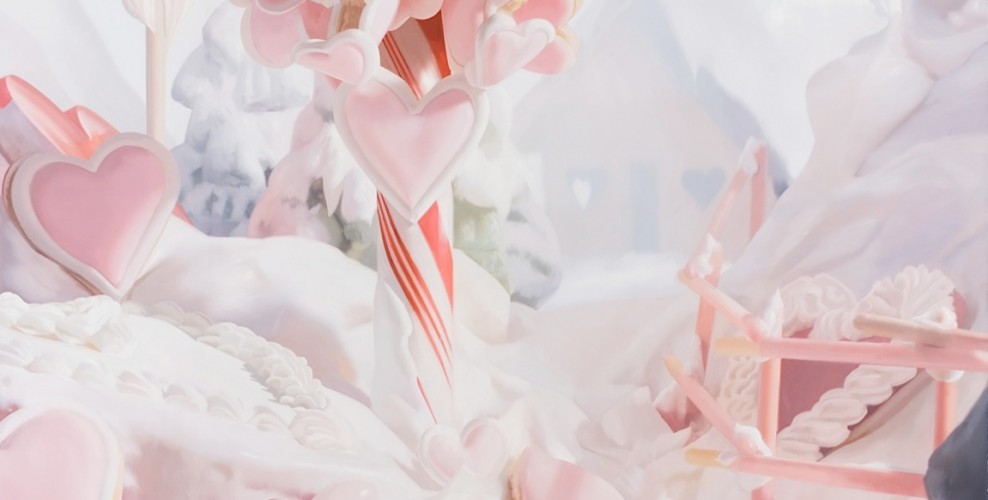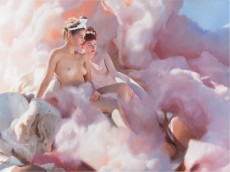 The arousal of unmitigated desire is the subject of multi-disciplinary artist Will Cotton’s sublimely hedonistic paintings, sculptures, confectionary and performance pieces. With an aesthetic that is equal parts American Pin-up and Italian Post-Renaissance, Cotton’s trademark appetitive utopias are nevertheless wholly original – likewise invoking in viewers, both adult and child, the reflexive response of lust.
The arousal of unmitigated desire is the subject of multi-disciplinary artist Will Cotton’s sublimely hedonistic paintings, sculptures, confectionary and performance pieces. With an aesthetic that is equal parts American Pin-up and Italian Post-Renaissance, Cotton’s trademark appetitive utopias are nevertheless wholly original – likewise invoking in viewers, both adult and child, the reflexive response of lust.
The contemporarily coined term food porn aptly describes at least one aspect of these works, which wittingly or otherwise succeed in speaking volumes about modern commercialism and material excess.
But Cotton’s visual narratives constitute no ethical tome. Tapping the all too often-abandoned Arcadias of youth, the artist wishes merely to place us back in the world as we experienced it as children; and thereby at home in the rapture of our passions – the thing that often makes reality worth living.
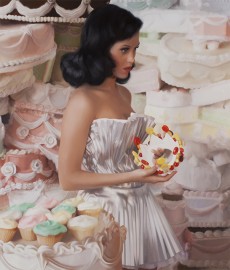 Was yours an early fascination with confectionary?
Was yours an early fascination with confectionary?
Like (I suspect) with many children, my earliest memories of confectionary happened around Halloween with baskets full of trick or treat candy. I clearly remember an awakening curiosity into the nature of boundless desire, and the practical need to mitigate an appetite for sweets!
Were you taken up with utopic imagery as a child? What are some of your favorite related childhood films or books?
My brothers and I played the Candy Land board game as children. It really never occurred to me that this was or wasn’t a real place. Children are in the unique position of seeing everything with fresh eyes, and as such, a candy utopia is no more improbable than the existence of Giraffes and Gorillas.
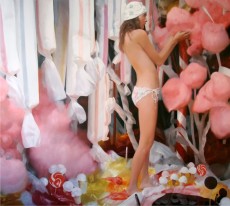 What are some personal references from childhood for your fantasylands: places visited, childhood dreams?
What are some personal references from childhood for your fantasylands: places visited, childhood dreams?
One of my earliest memories is Neil Armstrong landing on the moon – consequently a lot of my dreams and fantasies had to do with space travel. Also, an early visit to Disneyland certainly made an impression. Like sweets in general, that theme park, as I remember it, exists only for the pleasure of its visitors. Disney was definitely one of the great utopian dreamers.
Do you think there are childhood roots for humanity’s drive to explore Utopic ideals?
Yes! That makes a lot of sense. In fact it’s born of a wonderfully impractical creative imagination, unchecked by an understanding of the complexities of politics and human nature – of which we become so aware as adults.
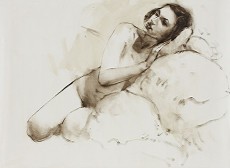 A lot of your work seems to reference classical art; the poses, the composition and the lighting. Are there particular eras or artists that you admire?
A lot of your work seems to reference classical art; the poses, the composition and the lighting. Are there particular eras or artists that you admire?
I’ve been looking at Giovanni Battista Tiepolo a lot. I’m intrigued by the way he creates a seamless transition from the real to the mythological. Somehow, he’s able to paint a scene full of people lounging around in the clouds – and it feels totally believable! I think we’re in an odd period right now: the imagery in photos is suspect, while a painted depiction isn’t questioned with the same skepticism.
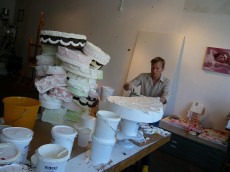 One of the fascinating things about your imagery is the craft: the model making, the baking, the lighting and the painting process. Could you talk a little about behind the scenes of your work?
One of the fascinating things about your imagery is the craft: the model making, the baking, the lighting and the painting process. Could you talk a little about behind the scenes of your work?
My work experience is very multi-sensory. I’m working with materials associated with smell and taste, in addition to being visually interesting. I always begin a painting by assembling the relevant props and Maquettes in the studio, which has often meant baking various cakes and other sweets. These become an indispensable visual reference for me to paint from.
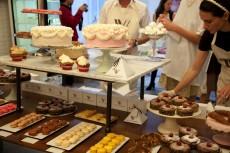 The popup bakery you did at Partners & Spade felt like an extension of your painting work, and a departure. True?
The popup bakery you did at Partners & Spade felt like an extension of your painting work, and a departure. True?
A few years ago I decided to do a performance that would effectively bring more of my studio practice into the gallery. I called the piece Will Cotton Bakery, and that’s essentially what it was. I chose a group of recipes that all had some personal relevance for me, and for three consecutive weekends baked and sold all the various confections onsite. Since I was baking right in the space, the visitors would experience the piece first through smell, then sight, and finally taste.
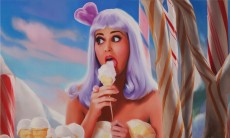 What is your fascination with advertising?
What is your fascination with advertising?
My interest in advertising has to do with the process of deliberately awakening desire in the intended subject – with watching the process of creating a feeling of perceived lack.
Your art direction for Katy Perry was intriguing because of the fine-art context. Does having your work used in commercial/ promotional ventures change the perception of it?
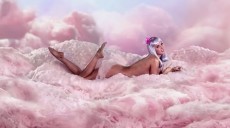 Most of the 100 million plus viewers who’ve seen that video won’t even know that I was involved, but I still find it very exciting to think that this imagery that I’ve been working on over the last fifteen years has found it’s way into pop culture.
Most of the 100 million plus viewers who’ve seen that video won’t even know that I was involved, but I still find it very exciting to think that this imagery that I’ve been working on over the last fifteen years has found it’s way into pop culture.
Could you talk a little of the creative process behind working with a director /musician – was it collaborative or more a ‘reference’ your work?
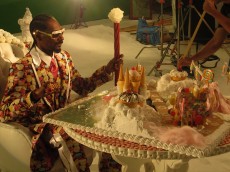 That was really a rewarding collaborative experience. Matthew Cullen (the director) called me and said they were going to try to make this video look like my paintings, and “would I like to be involved?” He wanted me there to be sure the look of the set felt right to me. I wound up doing a lot of the prop building and contributed most of the background images. Matthew and Katy worked out the narrative elements, and of course the music was all her.
That was really a rewarding collaborative experience. Matthew Cullen (the director) called me and said they were going to try to make this video look like my paintings, and “would I like to be involved?” He wanted me there to be sure the look of the set felt right to me. I wound up doing a lot of the prop building and contributed most of the background images. Matthew and Katy worked out the narrative elements, and of course the music was all her.
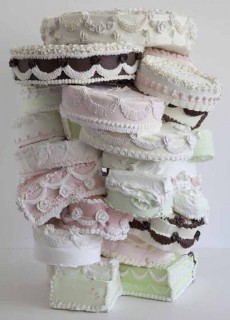 What are your vices? Are they played out in your work?
What are your vices? Are they played out in your work?
The terminology vice and virtue has a relationship to my interest in desire, but I don’t really think in those terms – as they might apply to my own life. There’s an implied judgment in that rhetoric that might hinder an open-minded exploration of the subject. I’ve certainly done most things that would be considered vices! Similarly, it’s important to me that my work is not a condemnation of indulgence, but an inquiry into, and even a celebration of, those things that can inspire longing.
Describe the relationship, similarities and differences, between adult appetites/desires and those inherent in childhood as it relates to your work?
For my purposes, the differences are actually incidental. Desire is the constant, and its object not only changes but mustchange, in both children and adults, in order to remain potent.
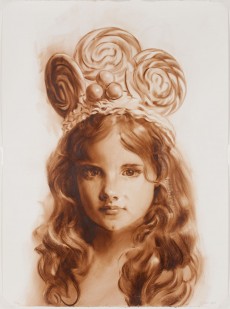 Would you ever incorporate children into your art?
Would you ever incorporate children into your art?
Yes, I’ve been painting children recently.
Could you talk a little about it? And, would you ever create works for children?
I’m currently building a set for a production of Peter and the Wolf at the Guggenheim Museum Theater. Since there will be no real actors on stage, my design incorporates all the characters from the story into the set. My model for the Peter character is a six-year old named Aims Chamberlain Smit.
Naïve concepts of Utopia referenced in your work clearly parallel the motifs of many childhood fables (with their ever-present cautionary warnings). Is there likewise an adult moral of the story to your work?
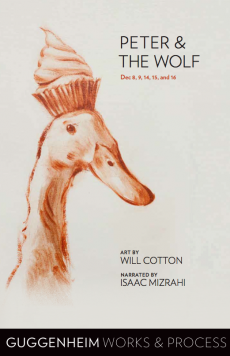 Life on Earth is perilous for all of us no matter what age, and our own desires are among the potential hazards we all navigate every day. But my paintings have no moral compass. For me the worst thing that could happen would be to find myself one day without any desire at all.
Life on Earth is perilous for all of us no matter what age, and our own desires are among the potential hazards we all navigate every day. But my paintings have no moral compass. For me the worst thing that could happen would be to find myself one day without any desire at all.
-Larissa Zaharuk
For more on Will Cotton, here: http://www.willcotton.com/
For more on Peter & the Wolf: http://www.youtube.com/worksandprocess

